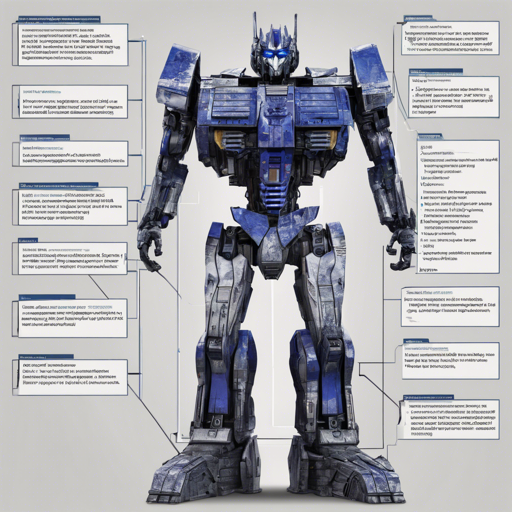If you’ve ever dreamed of harnessing the power of a large-scale transformer model, Megatron might just be your golden ticket. Developed by NVIDIA, this robust model is designed to generate text in the same vein as GPT-2, and with its 345 million parameters, it promises impressive performance. Let’s guide you through the process of running Megatron GPT-2 with the Transformers library, step by step!
Prerequisites
Before diving in, ensure you have the following prerequisites:
- Access to a machine with NVIDIA GPU support.
- Installation of Python 3 and the necessary library dependencies.
- A basic understanding of command line interface (CLI) operations.
Throughout this guide, we will run all the commands from a folder we’ll refer to as $MYDIR. To define this directory, open your terminal and run:
export MYDIR=$HOMEFeel free to change $MYDIR to a location that suits you.
Step 1: Clone Transformers
To begin, you’ll need to clone the Transformers library. Run the following command:
git clone https://github.com/huggingface/transformers.git $MYDIR/transformersStep 2: Get the Checkpoints from the NVIDIA GPU Cloud
Create a directory for the model checkpoints:
mkdir -p $MYDIR/nvidia/megatron-gpt2-345mNow, download the checkpoints from the NVIDIA GPU Cloud (NGC). To do this, you need to sign up and set up the NGC Registry CLI. For further instructions, check out the NGC documentation.
Alternatively, for a straightforward download method, you can run:
wget --content-disposition https://api.ngc.nvidia.com/v2/models/nvidia/megatron_lm_345m/versions/v0.0/zip -O $MYDIR/nvidia/megatron-gpt2-345m/checkpoint.zipStep 3: Converting the Checkpoint
To utilize the model with the Transformers library, you need to convert the checkpoint. Execute the following command:
python3 $MYDIR/transformers/src/transformers/models/megatron_gpt2/convert_megatron_gpt2_checkpoint.py $MYDIR/nvidia/megatron-gpt2-345m/checkpoint.zipThis will generate config.json and pytorch_model.bin in the specified directory. Ensure you have the respective files as this is crucial for the next steps.
Step 4: Handling Potential Issues
If you encounter the following error while running the conversion script:
ModuleNotFoundError: No module named megatron.model.enumsThis means Python cannot locate your Megatron-LM clone. If you haven’t cloned it yet, do so using:
cd tmp
git clone https://github.com/NVIDIA/Megatron-LMThen, adjust the Python path accordingly:
PYTHONPATH=tmp/Megatron-LM python src/transformers/models/megatron_gpt2/convert_megatron_gpt2_checkpoint.py ...If you’re using a fork (e.g., Megatron-DeepSpeed), ensure the path to that fork is set up in your environment path.
Step 5: Text Generation
Now that you have the model prepared, let’s generate some text! Here’s how you can do this:
import os
import torch
from transformers import GPT2Tokenizer, GPT2LMHeadModel
# The tokenizer. Megatron was trained with standard tokenizer(s).
tokenizer = GPT2Tokenizer.from_pretrained('gpt2')
# The path to the config checkpoint (see the conversion step above).
directory = os.path.join(os.environ['MYDIR'], 'nvidia/megatron-gpt2-345m')
# Load the model from $MYDIR/nvidia/megatron-gpt2-345m.
model = GPT2LMHeadModel.from_pretrained(directory)
# Copy to the device and use FP16.
assert torch.cuda.is_available()
device = torch.device('cuda')
model.to(device)
model.eval()
model.half()
# Generate the sentence.
output = model.generate(input_ids=None, max_length=32, num_return_sequences=1)
# Output the text.
for sentence in output:
sentence = sentence.tolist()
text = tokenizer.decode(sentence, clean_up_tokenization_spaces=True)
print(text)Using Hugging Face Trainer
If you want to leverage the Hugging Face Trainer with this model, follow these quick steps:
- Download the NVIDIA checkpoint:
- Convert the checkpoint:
- Fetch any missing files:
- Move the converted files into the cloned model directory:
wget --content-disposition https://api.ngc.nvidia.com/v2/models/nvidia/megatron_lm_345m/versions/v0.0/zip -O megatron_lm_345m_v0.0.zippython src/transformers/models/megatron_gpt2/convert_megatron_gpt2_checkpoint.py megatron_lm_345m_v0.0.zipgit clone https://huggingface.co/nvidia/megatron-gpt2-345mmv config.json pytorch_model.bin megatron-gpt2-345mNow, the megatron-gpt2-345m directory should have all the requisite files to be passed to the HF Trainer via --model_name_or_path megatron-gpt2-345m.
Troubleshooting Ideas
If you run into any issues during these steps, consider the following troubleshooting tips:
- Check your internet connection if downloads fail.
- Ensure that your Python environment is correctly set up with all necessary dependencies installed.
- If your model fails to load, verify that the checkpoint files are correctly placed in the designated directory.
For more insights, updates, or to collaborate on AI development projects, stay connected with fxis.ai.
Conclusion
With this guide, you should be well-equipped to set up and run the Megatron GPT-2 model using Transformers. Remember, experimenting with such powerful models can lead to fascinating results and insights into the world of text generation.
At fxis.ai, we believe that such advancements are crucial for the future of AI, as they enable more comprehensive and effective solutions. Our team is continually exploring new methodologies to push the envelope in artificial intelligence, ensuring that our clients benefit from the latest technological innovations.

